How To Find and Identify Wild Oyster Mushrooms
Oyster mushrooms are easy to identify, grow all over the world, and are a delicious gourmet mushroom that can be added to almost any meal.
Plus, they have some pretty awesome health benefits.
Of course, you could always just find your oyster mushrooms at the grocery store, or even grow them yourself – but there is something special about finding them in the wild.
What Are Oyster Mushrooms?
Oyster mushroom is the common name for mushrooms in the Pleurotus genus, so the term “Oysters” can be used to represent a number of different species.
The most common is Pleurotus ostreatus, sometimes called the Pearl Oyster. This is also the most widely cultivated species of Oyster, and the one that you are most likely to find at the grocery store.
In Alberta, Canada (where I live), you’re most likely to find a close relative called Pleurotus populinus. P. populinus is typically smaller, and grows primarily on dead or dying aspen trees.
There are plenty of other species of Oyster that you may encounter in the wild.
One of which, the yellow oyster (Pleurotus citrinopileatus), is not native to North America, but has seemed to have escaped from the farms where it is cultivated and is now showing up more frequently in the wild.
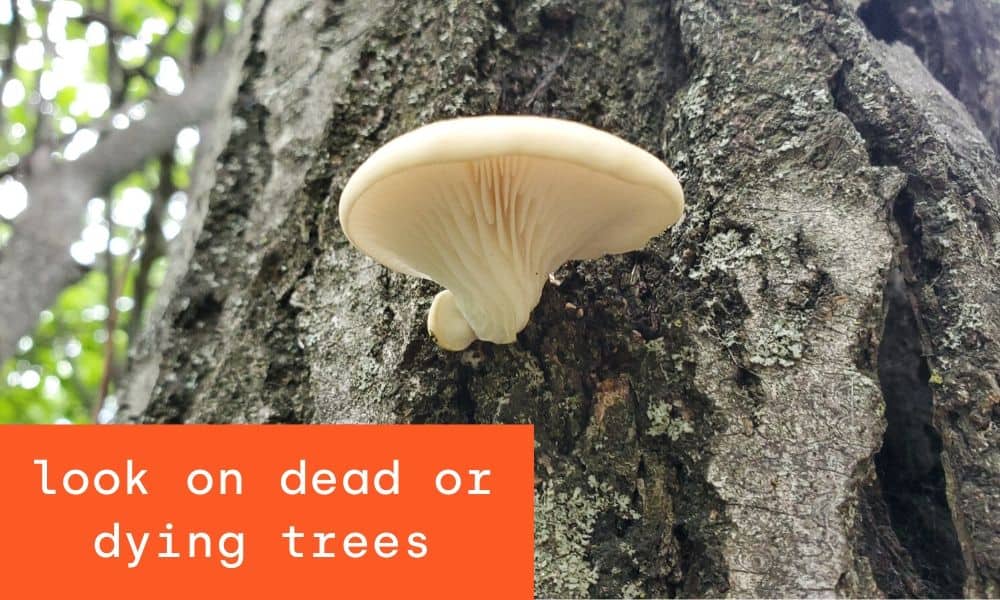
Where To Find Them
Oyster mushrooms are “saprophytic” which means they get their food from digesting dead organic matter. This is different from mushrooms like Porcini or Chanterelles which are “mycorrhizal” and live in symbiosis with the roots of a living tree.
Wild oyster mushrooms can be found fruiting on dead or dying trees, on fallen logs, or on stumps. A good strategy for finding oysters is to look first for fallen logs, and then seeing if there are any mushrooms growing off of them. Generally, you will not find oysters growing straight out of the ground.
Oyster mushrooms are common in the spring, but can also be found throughout the summer and fall. Look for decaying hardwood logs or stumps in low lying areas, often beside ponds, creeks, or other naturally humid areas.
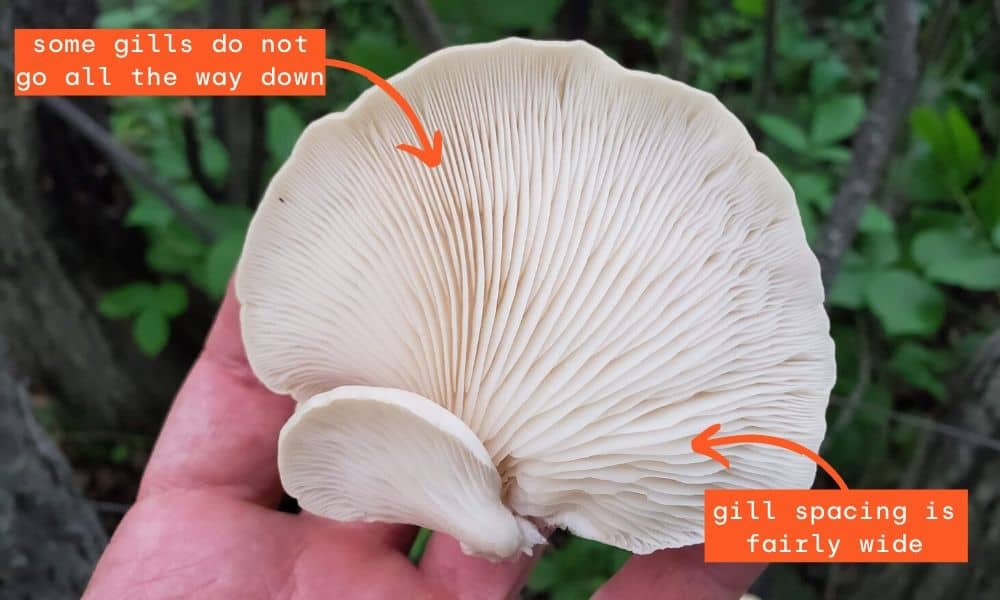
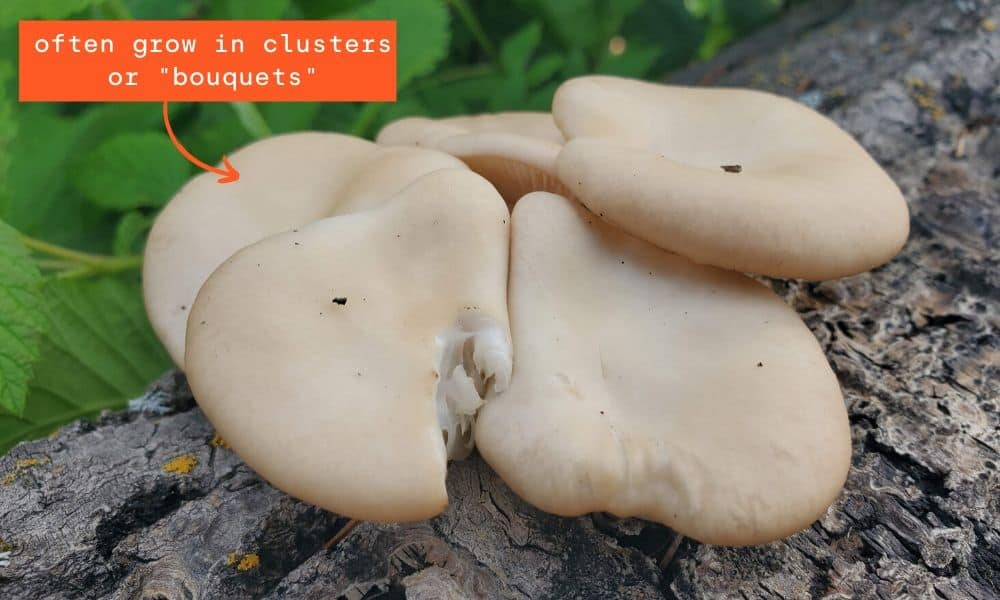
How To Identify Oyster Mushrooms
Oyster mushrooms are pretty easy to identify.
In general, they are a shelf mushroom with a broad fleshy cap. The edges of the cap are enrolled, flattening out as the mushroom matures. The color of the cap can vary depending on species, but is usually tan to brown.
Oyster mushrooms do not have a traditional stem, but more of a “pseudostem”, which can vary in length depending on where the mushroom is fruiting. Mushrooms fruiting right off the side of a tree may have no stem at all.
The gills are broad and fairly spaced. Some of the gills run all the way down the pseudostem, while others only run partially down (known as lamellulae).
The mushroom can grow singly, but more often will form clusters or “bouquets” or multiple fruiting bodies.
Many guidebooks say that the mushroom (particularly Pleurotus populinus) smells of anise. I can’t really tell to be honest, but it does have a distinct oyster mushroom smell, although this is not a primary identification characteristic.
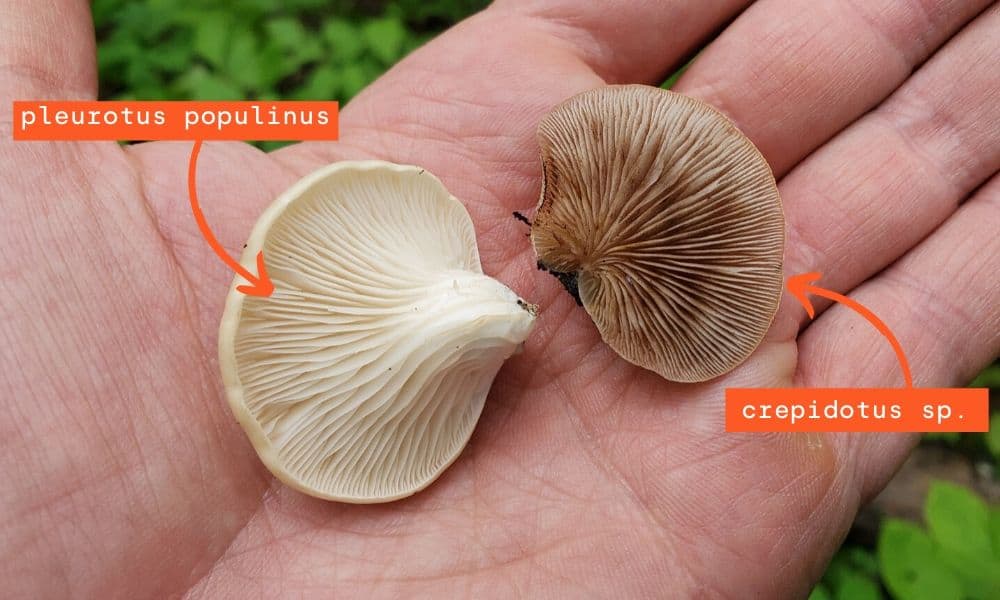
Potential Lookalikes
Although Oyster mushrooms are relatively easy to identify, there are some superficial lookalikes that you may want to be aware of. This will depend highly on your location, so the best bet is to hook up with your local mycological society, or pick up a guidebook that is specific to your region.
In Alberta, the only one that looks similar enough is a Crepidotus species. These mushrooms are inedible, although not considered specifically poisonous. The main difference is Crepidotus sp. are smaller, grow singly instead of in clusters, and have a brown spore deposit instead of white or gray.
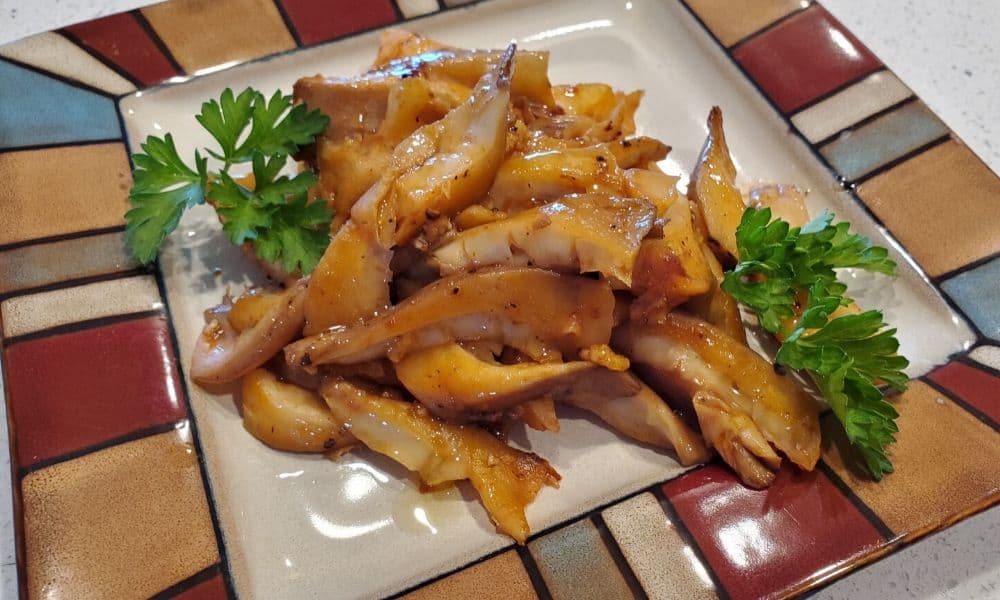
Cooking With Oyster Mushrooms
Oyster mushrooms are a delicious gourmet edible mushroom that can easily be added to any meal!
First step, as with any wild mushroom, is to clean it and check for bugs. Washing your mushrooms is considered blasphemy in some mushroom circles, but I think it is prudent, if nothing else but to get the dirt off.
Wild mushrooms – especially large oysters- will often be infiltrated with bugs. The biggest giveaway is if you see a hole in the cap of the mushroom. If that is the case, cut the mushroom in half to check. Sometimes you will see a number of holes running down the stem, which means it is likely too bug-eaten to enjoy.
If you ended up with some clean, bug-free mushrooms, simply chop them up and fry them in a pan with some butter (or butter substitute) adding a little garlic and pepper for some extra flavor. Cook them thoroughly. I like to cook them until they have browned sufficiently. Mushrooms should never be eaten raw.
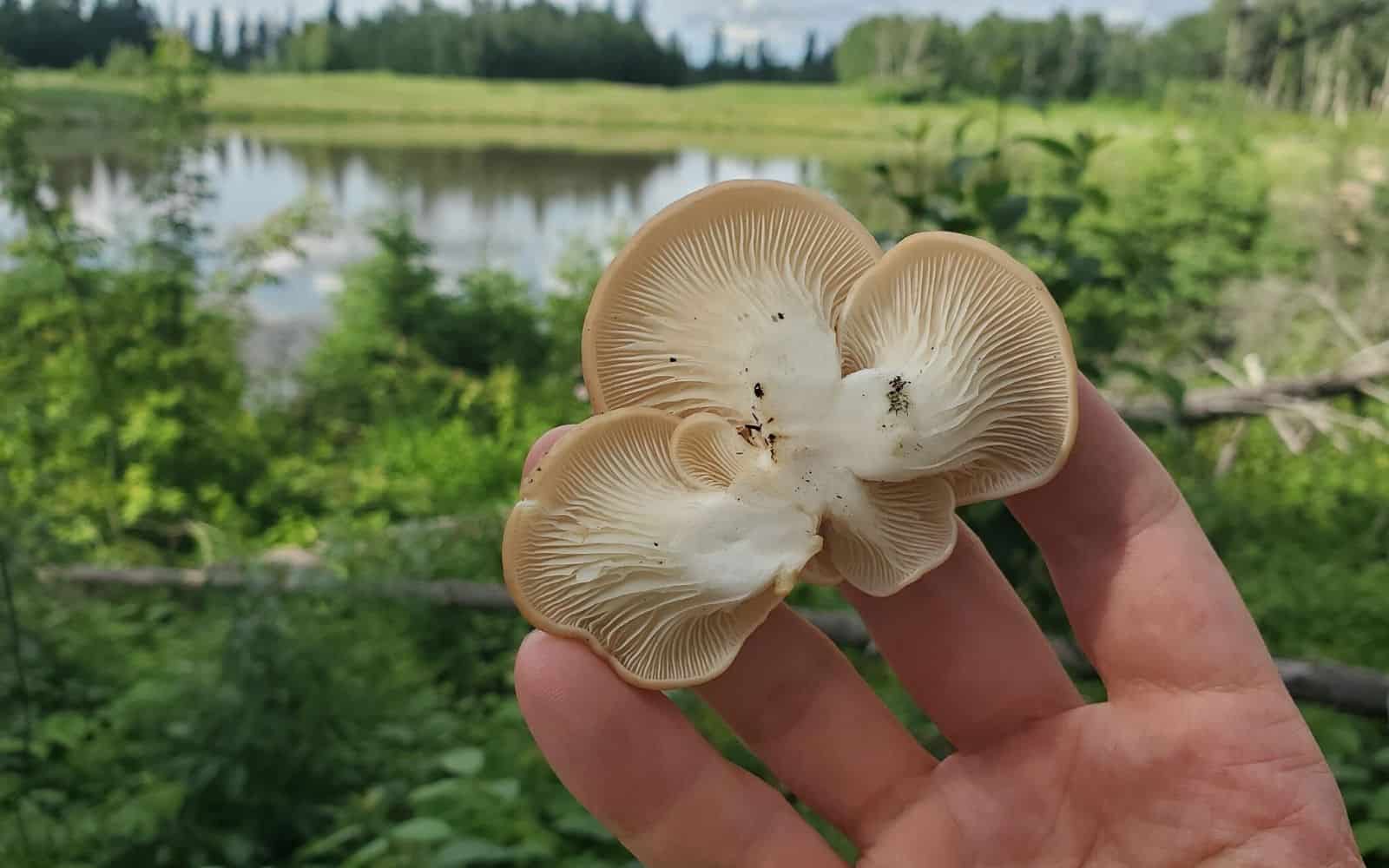
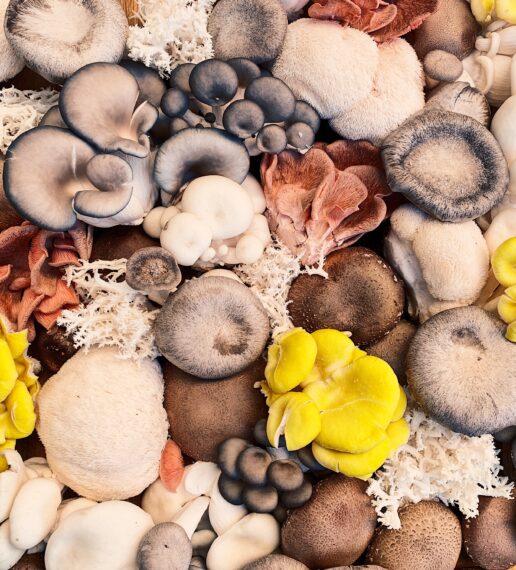

I’m in Oregon. We have oysters and chanterelles. But I think we also have chantrelles that are near albino. Is there an easy way to tell the difference between a chanty and oyster?
For sure! Chanterelles will grow out of the ground, not directly off of logs like Oysters. Also, chanterelles do not have true gills, but instead have ridges.
Cool. We definitely have chantrelles that are albino then. They grow in the high prarie, not Doug fir forest.
Hi Tony. From Ontario/Western Quebec. New to mushroom hunging, my new pandemic hobby. Was curious, have you ever seen oyster mushrooms growing high up on a dead vertical tree trunk? Say 20ft off the ground? I have one in my hard. But its so high up I can’t tell, and haven’t gotten the ladder out yet to try. But it really looks like oysters, nice and white and the right shape. Just doubt oysters can grow that high off the ground. Curious to hear your opinion.